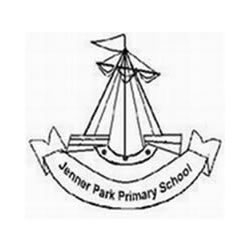
Organisation: Jenner Park Primary School
Intervention: Catch Up® Literacy, Catch Up® Numeracy
Submitted by: Debbie Rowan
Background
Jenner Park Primary School is situated to the east of the town of Barry. The school provides education for pupils between three and 11 years of age. Pupils are taught through the medium of English, and Welsh is taught as a second language. Most pupils come from White British ethnic backgrounds.
There are currently 210 full-time pupils on roll. In addition, 40 children attend the nursery on a part time basis, 20 in the morning and 20 in the afternoon. Pupils entering the nursery and reception classes come from a wide range of socio-economic backgrounds and enter school with very varied levels of skills.
The school serves a catchment area that is economically disadvantaged and is a designated Communities First Area.
Implementation
Catch Up® Literacy and Catch Up® Numeracy are stalwarts of our Provision Map. At Key Stage two, all LSAs are expected to deliver Catch Up®, with a recent development being the expansion of Catch Up® into the Foundation Phase for pupils in Year 2, and a team of ALN LSAs who deliver Catch Up® across the school under the direction of the SENco/Catch Up® Co-ordinator.
Pupils are initially identified using LA reading tests, and class teachers and LSAs are also encouraged to identify pupils using professional judgement and knowledge of the children.
Catch Up® pupils are generally those who have average or above cognitive scores but who need a boost in order to attain their potential. They usually have a gap of between 6-24 months in terms of reading age/chronological age. The same system is used for Numeracy, with the Basic number screen used to track impact.
Once pupils have been identified, parents are invited for an informal afternoon session to meet the deliverers and have an opportunity to ask questions.
Progress is monitored through a ‘comprehensive tracking system’ (ESTYN) and LSAs are encouraged to provide a half-termly thumbnail sketch, which teachers have access to during parents' evenings.
Case Study 1 - Catch Up® Literacy
Pupil B came into year 3 lacking confidence. Due to the dynamics of the class he had the potential to slip under the radar. In addition, his confidence and self-esteem were low.
His reading age (R.A) in September was 7.5 (close to chronological age) and his comprehension age (Comp. Age) was 7.9. However, the NFER data indicated a discrepancy.
He accessed - on average - 2 sessions a week from September until March, working on reading strategies and understanding of text.
He had made significant gains by January – R.A 9.9, Comp. Age 8.5. However, when assessing him at the end of the year (July), his Accuracy age had risen to 11.5 and his Comp. Age was 9.8 - well above his chronological age.
More importantly, he is now more confident, engaged in learning and uses strategies shown/learnt. He is interested in learning, will ask probing questions and say if he hasn’t understood something. He has made gains in all areas of the curriculum and his class teacher is considering giving him the ‘Star of the Year’ award.
Mum has noticed he seems much more positive and will join in with everything, whereas before he was too shy to take part in things.
Case Study 2 - Catch Up® Numeracy
Pupil A is a year five girl with a history of low self-esteem and confidence generally.
Prior to Catch Up® Numeracy, she rarely took an active role in class lessons. She was dependent on regular support during Maths activities and often appeared concerned about her lack of ability in front of her peers. Her knowledge of basic numeracy strategies, such as number bonds, was poor and this contributed to her low confidence and poor self-esteem. She also had literacy difficulties, which compounded her numeracy difficulties when considering word problems.
Pupil A was offered Catch Up® Numeracy following discussion with the class teacher, who felt the one-to-one intervention would suit her.
During the period of support, it became obvious that Pupil A was enjoying the sessions - “Is it my turn?” - and was growing in confidence during class Maths, “She now puts her hand up to answer questions more often (and gets them right, even the harder ones).”
This confidence is being matched by improved outcomes:
January Chronological Age 10.2 Number Age 9.6
July Chronological Age 10.7 Number Age 11.0
NC levels
Initial Teacher assessment 2a Final Teacher assessment 3a+
putting Child A in a very good position as she heads into Y6!
Aims
As well as acquiring the knowledge, skills and experiences of learning, the school seeks to guide pupils in the shaping of positive attitudes, values and personal relationships.